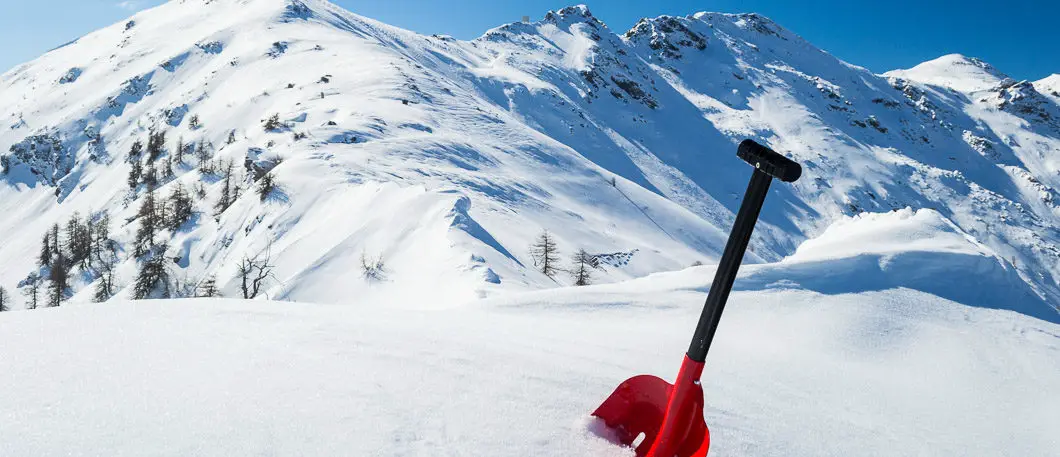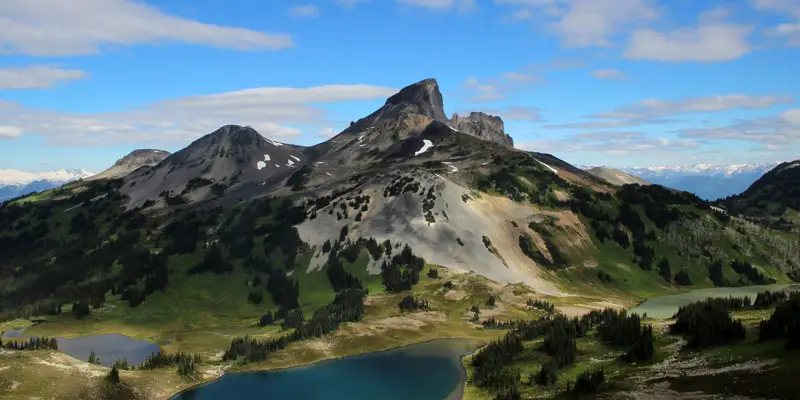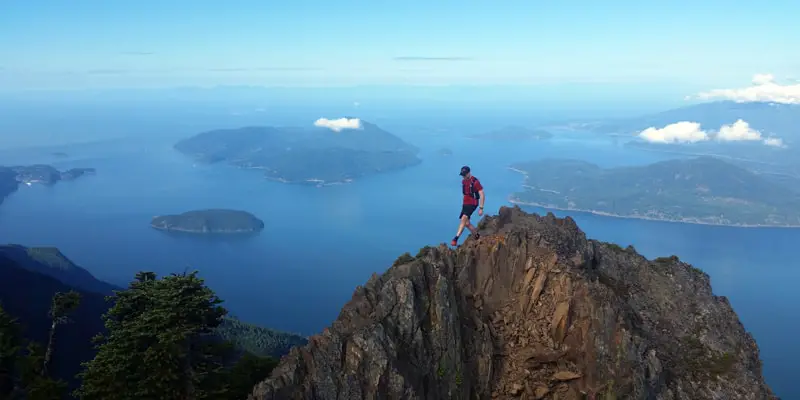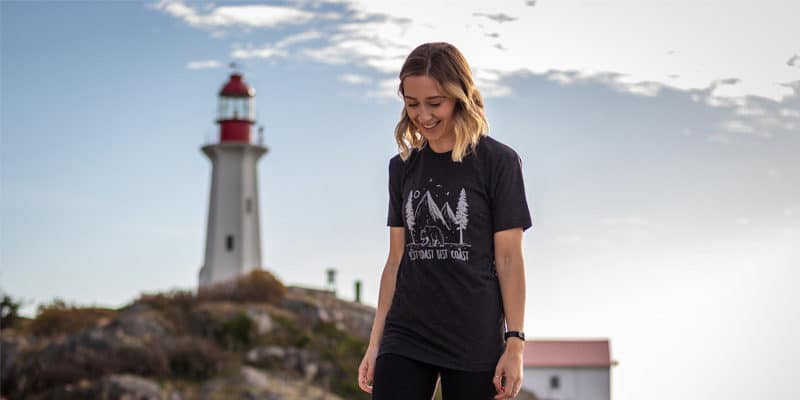Hiking Safety – Table of Contents
- Basic Preparation and Courses
- Daylight and Weather
- Navigation
- Wildlife
- Winter Safety
- The Essentials
- Hiking Safety Books
- Hiking Gear
Basic Preparation and Courses
Each year in the province of British Columbia there are over 1,600 search and rescue missions initiated. That is more than all the other Canadian provinces combined. Most of these missions are necessary because of a lack of preparation by those heading into the backcountry. Vancouver is a beautiful city where you can enjoy some spectacular hiking, but please be cautious and prepared before heading out. Do not be fooled by your proximity to civilization. Once you step into the backcountry, you are truly on your own.
The information provided here is meant to be a basic overview of outdoor safety. Hands-on experience is ultimately the best way to make sure you are prepared for the outdoors, and your best bet is to take a few courses (Canada West Mountain School, Spiritus Training, MEC and Slipstream offer great courses locally). In case of injuries, you may want to be better prepared by taking the St. John’s Ambulance’s Wilderness First Aid Course.
Depending on your activities, there are no shortage of courses you can take – avalanche safety training, wilderness first aid, wilderness survival, orienteering and navigation, and so on. Not only do these courses prepare you for the outdoors, but they are fun in themselves!
Before heading out on any trip you must be prepared – even if you are heading to a familiar location on a short hike. The unexpected can occur, including sudden weather changes, injuries, getting lost, and wildlife attacks. Here are the basics you should do before every hike.
At a minimum, the most basic things you need to do before going on a hike are:
1. Research the hike.
Read from multiple sources about your hike. Read guide books, online resources, and check current conditions reports. Ask your friends if they’ve done the hike before. Check the current weather report and sunset times. There are some links on our general Resources page that will help you with this research.
2. Fill out a trip plan.
It is important to always fill out a Trip Plan and leave it with someone you trust. This way, they can know when to expect your return and have all the information they need to provide to the authorities if you don’t return.
3. Bring the proper gear.
See the ‘The Essentials’ section below for a minimal starting point. But the proper gear includes other items you may need, specific to your hike. It also means having proper footwear (don’t wear street shoes).
When going back makes sense, you are going ahead
~ Wendell Barry
Daylight and Weather
As Vancouver is on the 49th parallel north, the amount of daylight the area receives varies greatly from season to season. At the summer solstice Vancouver receives over 16 hours of daylight, and during the winter solstice, it receives just over 8 hours of daylight. You must know roughly how long your hike will take, and be prepared for when to expect nightfall.
Weather can also vary greatly, not only from season to season but from hour to hour. Just because the day starts off clear and sunny, it is no guarantee your hike will end in the same conditions. There is an old saying in Vancouver – ‘If you can’t see the mountains, it’s raining. If you can see the mountains, it’s going to rain’.
As the wind comes in from the Pacific Ocean and meets with the tall Coast Mountains of southwestern British Columbia, clouds can form in a hurry, bringing heavy rain, thunder, and lightning. Be sure to check the weather forecast shortly before leaving on your hike, but also expect that the forecast may not hold true throughout the day.
Weather Links
- Weather forecast
- Marine tides and forecast
- Avalanche bulletins
- Mountain forecast
- Vancouver sunset times

A Starter’s Guide to Hiking in Vancouver.
- Guides for 10 amazing hikes near Vancouver
- Hiking safety and trail etiquette
- Resources, hiking gear overview, and more!
Navigation
You’re never lost; you’re just exploring. However, exploring grows old very quickly if you are cold, hungry and exhausted
~ Cam Honan
It’s never a good idea to assume the trail will be easy to follow and that you’ll be able to stay on track during your hike. One of the common reasons people need Search and Rescue help is because they end up in a place they didn’t intend to be, either trapped in precarious terrain or unable to find their way back on track. Many beginner hikers are amazed to learn how quickly you can leave civilization behind and just how easy it is to get lost in the dense forests of southwest B.C..
The best thing you can do to help with your navigation is to carry an old-fashioned topo map and a compass (these are part of the The Essentials). However, using a map and compass requires a bit of practice and training. I encourage you to check out some of the courses offered from the companies above on wilderness navigation. MEC periodically offers a free Intro to Map and Compass 101 seminar.
A good, dedicated wilderness GPS device, such as the inReach/Roadpost, can be invaluable also. However, be wary of relying entirely on electronics as they can fail and batteries die. A GPS device is a good supplement to carrying a map and compass.
A mobile phone does not qualify as a dedicated GPS device.
Coquitlam SAR Manager Michael Coyle has a detailed post explaining why relying on a cellphone for navigation is a terrible idea: Why you shouldn’t use Smart Phones for Backcountry Navigation.
If you are a hiker, then you should not use the smart phone as your general navigations device. It should be held in reserve to to call for help and to communicate with SAR if there is a problem. Using the phone runs down the batteries and makes your best chance at calling for help less and less useful. Navigation is best done with a purpose-built wilderness GPS with updated maps, or a paper map and compass.
Additional links and map services for navigation
- CalTopo – Research, plan, share, and take maps with you on your mobile device
- Gaia Maps – Plan trips and record GPS tracks for free. (The premium membership is affordable and I personally use it).
- Fatmap – 3D Map & Guides for Skiing, Hiking and Biking
Wildlife
You should know how to handle an encounter with bears or cougars in case you come across any during your hike.
We have a page dedicated to bear and wildlife-specific safety here.
Winter Safety
Traveling in the winter carries a whole new set of risks.
We have a page dedicated to winter-specific safety here.
The Essentials
The Essentials are a MUST for any outing. The Essentials are a minimum required amount of gear to take on all your hikes. The easiest thing is to put most of the items in a single, waterproof bag that stays in your backpack and never comes out.
The Essentials include:
- Illumination – A flashlight or headlamp in case you get caught in the dark. Headlamps are ideal as they are small, lightweight, have long battery life and enable you to keep your hands free. Always make sure you have fully-charged batteries before each trip.
- Firemaking kit – Waterproof matches or waterproof lighter in case you need to stay on the mountain overnight or find yourself needing to quickly warm up. It is also prudent to bring some firestarter, such as lint from your clothes dryer at home, so you can quickly get a fire started. A small candle is also helpful to have in your kit.
- Nutrition and hydration – It is important to bring extra food. This means enough food to sustain you during your outing, plus some spare calories in case you are out in the mountains longer than expected. Sugary snacks are a good choice as they will provide quick energy. So don’t be afraid to take along some chocolate bars. Bring 1 litre of water per person and think about bringing an extra water bottle if you can manage the extra weight. Sports drinks or powder mix are also a good option as they replace electrolytes lost in sweat. Bringing chemical water treatment or a water filter is also wise in case you need to refill your bottle from a stream or lake.
- Clothing – Be prepared for different weather. It is wise to bring a lightweight rain/wind shell, gloves, and a toque. Layer your clothes so you can add and remove as needed. Ask yourself: if you are forced to spend a night in the worst conditions possible for the season, what clothing would be required to survive the night?
- Navigation – A topographical map and compass should be brought on any hike that is longer than a short walk on a well-marked trail. These items are useless, however, unless you first know how to properly use them. A GPS device is a good supplement to a map and compass.
- First aid kit – There are many good pre-arranged first aid kits you can buy that will contain gauze pads, blister treatment, bandages, disinfectant ointment, sam splint, tweezers, and so on. You can customize your kit as needed, and also include some pain killers.
- Emergency shelter – A bivy sack, brightly colored tarp or large orange plastic bag will help keep you warm and dry, but also help you been seen by search and rescue.
- Pocket knife – A basic pocket knife can be useful in countless situations. Even better is a multi-tool that contains a few screwdrivers and scissors.
- Sun protection – Heatstroke can be dangerous. You want to stay protected from the sun at all times. This means wearing a hat that provides shade to your face and back of your neck, sunscreen, and sunglasses. You can also get lightweight, sun protection clothing that has an ultraviolet protection factor (UPF).
- Signaling device – A whistle is important to help Search and Rescue find you if you become lost (you can only yell for so long before your voice becomes hoarse).
Other gear that is good to have
- Cell phone – Keep it turned off until you need it to save the battery
- Bug repellent
- Guidebook or printed description of trail
- Water filtration/ purification
- Napkins or toilet paper
- Ziploc bag to carry out waste
- Hand Sanitizer
- Chapstick
- Binoculars
- Camera
- Thermos with a hot drink
- Waterproof pencil & paper
- Trekking Poles
Below are two videos on the The Essentials, and both are worth taking a few minutes to watch.
The first video is a short overview of the The Essentials and why the items are important.
The second video is a bit longer but very informative and helpful. The video was made by local ultra runner Gary Robbins and features everything he carries with him on all his outings. Gary has run the West Coast trail in just over 10 hours and has traveled the world competing in 100+ mile endurance events, so its safe to say he knows his stuff! And it’s also worth noting that Gary is running with all these items with a much smaller backpack than most day-hikers would have – so there’s no excuse for not having this stuff with you!
Hiking Vancouver: Exploring Southwest British Columbia’s Most Beautiful Trails
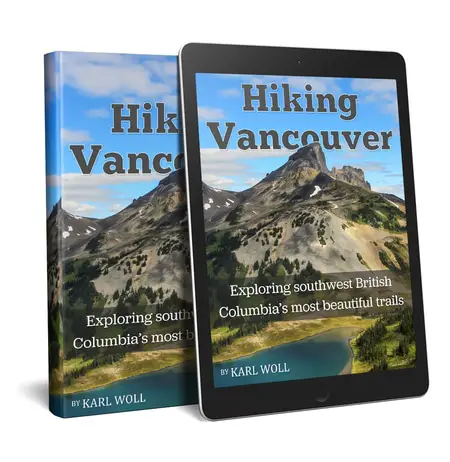
Want all 130+ of Outdoor Vancouver’s hiking guides in one eBook? From the classics like The Chief and Black Tusk to the hidden gems, they’re all here in over 500 pages!
Hiking Vancouver is your guide to the best hikes in southwest British Columbia.
Only $8.99 (or included with OV Patron membership)
Educational Books on Hiking Safety
- Allen & Mike’s Avalanche Book
- Allen & Mike’s Really Cool Backcountry Ski Book
- Backcountry Avalanche Safety
- Be Expert with Map and Compass
- The Backpacker’s Field Manual
- Bushcraft First Aid: A Field Guide to Wilderness Emergency Care
- How to Survive Your First Trip into the Wild: Backpacking for Beginners.
- Mountaineering: The Freedom of the Hills
- Wilderness Navigation
Hiking Gear & Clothing
There is no bad weather, only inappropriate clothing
~ Ranulph Fiennes
Of all the safety considerations you make while being outdoors, none may be more important than your clothing. All too many people suffer injuries from having improper footwear, or suffer hypothermia because of having improper clothing. And let’s face it. Safety aside, nothing will ruin your enjoyment of the outdoors faster than being cold and wet.
The key to being properly dressed for hiking is to dress in layers.
There are three main layers you’ll want to consider for your outing:
Base Layer
This is the layer that goes on your skin, underneath everything else. This layer is meant to regulate your body heat, and also wick sweat away from your skin. Moving sweat away from your body will help you stay dry and warm.
For this reason, the base layer should be Merino wool or synthetic materials. Examples are:
- Socks – Thermal winter socks (and bring a backup pair – toes are especially prone to frostbite if your feet get wet).
- Synthetic top – A synthetic or wool tee or longsleeve tee.
MEC has a great article on how to choose base layers.
Middle Layer
The middle layer is meant to retain your body heat, keeping you warm. A good mid-layer will do this by trapping air close to your body. Again, synthetic fabrics and Merino wool make for a great middle layer. Fleece and synthetic down also work well here.
Examples are:
Outer Layer
The outer layer is meant to help protect you from the elements (wind, rain, snow, and sun), and to keep your mid and base layers dry. The type of shell or jacket you have will vary by season and outdoor activity.
Examples are:
- Warm, waterproof jacket.
- Waterproof pants.
- HIKING BOOTS.
- Toque. Even if it isn’t hot out, it’s a good idea to bring a toque with you in case you need it.
- Scarf or neck gaiter. These help keep your neck warm and are easy to add or remove as needed during the hike. If it’s hot, they can also be used for sweat, or to keep sun off your head.
- Gloves. Make sure they are rated for the temperature you will be in. Bring an extra pair in case they get wet or you drop one, fingers are prone to frostbite.
- Sunglasses and sunscreen.
- Gaiters (optional). Gaiters will keep the snow out of your boots, where it would melt and wet your socks.
Again, MEC has a detailed article on how to choose a rain jacket.
A general rule of thumb for all layers is to avoid cotton materials. Cotton, when wet, draws heat from your body and it takes a long time to dry.
You won’t always be wearing all these layers at all times, but you should have them with you. As an example, on a hot, dry day, you might not wear your outer layer during your hike. But you should have a shell with you, as the summit may be much widener and cooler than the base of the mountain. Also, weather conditions can change rapidly in the mountains.
While they can be expensive, having a few, high quality pieces of hiking gear will be a worthwhile investment. They will last a long time, and most importantly, they will help you keep you safe while hiking, and maximize your enjoyment of the time outdoors.
Online Canadian Outdoor Gear Retailers
If you’re looking for outdoor gear, there are a number of great online retailers in Canada. Most provide free shipping with a minimum purchase. We have compiled a few trusted online retailers below.
- Amazon – Amazon has a lot of great hiking and camping products. We’ve compiled an Outdoor Vancouver store on Amazon of our favorite gear available there.
- Altitude Sports. Free Shipping On Orders Over $49.99. Hassle-free returns.
- Arc’teryx – Arc’teryx is a technical high-performance outerwear and equipment company. Free shipping on all orders.
- Backroad Mapbooks. Backroad Mapbooks is Canada’s top-selling outdoor recreation guidebook series. Get free standard shipping on all GPS maps with code BRMBFREESHIP.
- Columbia Sportswear Canada. Columbia has a great reputation for winter coats and gear. Shipping is a flat $7 within Canada.
- Epic Water Filters. Water filtration for your next outdoor adventure (or at home). Free shipping in Canada.
- Helly Hansen. Free shipping on orders over $100.
- Hillsound Equipment. Canadian designer of hiking crampons for safe travel on ice + snow, waterproof gaiters and ultra lightweight seats. Free shipping on orders over $49.
- Hurley. Born from water, Hurley was founded in Huntington Beach in 1999 on the principle of empowering and fueling the voice of the next generation.
- Kemitomo.
- The Last Hunt. TheLastHunt.com is Canada’s only website uniquely dedicated to discount outdoor clothing and equipment.
- Mountain Equipment Co-op. MEC is a retail co-op that sells exclusively to members. Free shipping on orders over $50.
- Mountain Hardwear. Mountain Hardwear is an industry leader in premium outdoor apparel, equipment, and accessories. Shipping is a flat $7 within Canada.
- Mountain Wearhouse. Mountain Warehouse is a British outdoor retailer selling equipment for hiking, camping, skiing, cycling, running and fitness. Free shipping over $99.
- Patagonia. Patagonia is a designer of outdoor clothing and gear for the silent sports: climbing, surfing, skiing and snowboarding, fly fishing, and trail running.
- prAna. Yoga clothing for positive change. Free shipping on all orders.
- PRFO Sports. A leading action sports retailer in Canada. Carrying over 200 brands related to mountain biking, snowboarding, skiing, skateboarding, technical apparel & accessories. Free shipping on orders over $50.
- Running Room. The Running Room is truly a store for runners by runners. Free Curbside Pick-up or Free Economy Ground Shipping on orders $50+
- Salomon Canada. Snowboarding, trail running and hiking clothes & shoes.
- Stoko. Stoko’s K-Line integrate medical-grade knee bracing into athletic clothing. Each product provides uncompromised support, comfort, and movement so athletes can manage their pain, protect their bodies, and have confidence to stay active and get back to activity. Free standard shipping on all products.
- STORMTECH Performance Apparel. Highly technical outdoor apparel and accessories for men, women and children. Flat $15 shipping.
- Solo Stove. We design simple, ingenious outdoor products to help you create good moments that become lasting memories. Free standard shipping and returns on all orders in Canada.
- Sorel Footwear. $7 flat rate shipping on premium footwear.
- Valhalla Pure Outfitters. FREE shipping on orders totaling $49 and a no hassle return policy.
- Yeti Canada. In 2006, YETI Coolers was founded with a simple mission: build the cooler you’d use every day if it existed. YETI offers free Ground shipping on qualified orders.


